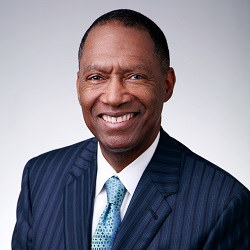Top-Level Takeaways
-
Strategy is about making choices that serve an overarching aim. Good strategy helps organizations make tough decisions about what and what not to do.
-
Two billion-dollar shops credit unions outline their strategic direction and what they’re doing in the short-term to meet their long-term objectives.
Strategy is an invaluable tool that helps organizations set a long-term direction and make near-term decisions about what to do and just as important, what not to.
The idea that strategy is about making plans is not entirely accurate, says Chris Howard, senior vice president of Callahan Associates, the Washington-DC based credit union consulting firm. Instead, strategy is about making choices. When opportunities arise, a credit union can, and should, use strategy to decide which ones to follow and which ones to forgo.
At conferences, during roundtables, and in strategic planning sessions with credit unions across the country, leaders at Callahan Associates have noted several recurring themes that the firm has identified as opportunities for 2019. One of those themes: How does a credit union take the time to prioritize strategy?
The Importance Of Strategy

Chris Howard, Senior Vice President, Callahan Associates
Strategy is important for several reasons, Howard says.
Strategy helps credit unions grade appealing and acceptable opportunities as they arise.
Strategy becomes a test for investments and decisions, the Callahan VP says. If you do something, is it in line with the credit union’s strategy? Will the decision help the credit union achieve its near-term strategic objectives?
And, the very process of creating a strategy helps a credit union learn about its strengths and weaknesses. In fact, Howard believes the value gained from planning is just as important as the plan itself. As former president Dwight D. Eisenhower said, Plans are useless, but planning is everything.
This is a sentiment with which Howard wholeheartedly agrees.
The process of laying out everything is how you learn about your capabilities, weaknesses, and strengths, he says. It’s an active SWOT. As far as I’m concerned, you can shred the plan after you’ve created it. It’s the exercise of planning that helps an organization become more effective and empowered to pursue its strategy.
If clarifying a strategy that will help the credit union make day-to-day, week-to-week, and month-to-month decisions is daunting, then take heart that sustaining a strategic direction traces back to one single idea: Know your why.’
ContentMiddleAd
If you don’t know why you’re doing something, you probably won’t do it very well, Howard says. If you know why you’re doing something, you are almost guaranteed to do it better than those who don’t.
Beyond that, Howard offers five more key pieces of advice:
- Know yourself: Ground your strategic direction within the credit union’s mission. Everyone can, and ought, to do that.
- Know your capabilities: In the planning process, you’ll learn about your strengths and how you can leverage them. You’ll learn about your weaknesses, too, and how to avoid or compensate for them.
- Be transparent: The credit union must communicate what its strategy is, and that must be understood by those with a stake in executing it.
- Align your strategy with your operating plan: Credit unions have operating plans. Those should be aligned with your strategy.
- Pick something: Make a decision. Put a stake in the ground. If you know who you are and why you are, this will be easier.
Make The Connection
CU QUICK FACTS
University FCU
Data as of 09.30.18
HQ: Austin, TX
ASSETS: $2.4B
MEMBERS: 248,638
BRANCHES: 23
12-MO SHARE GROWTH: 6.3%
12-MO LOAN GROWTH: 10.6%
ROA: 1.06%
The mission of University Federal Credit Union ($2.4B, Austin, TX) is to provide for the well-being of members. Three years ago, UFCU’s board pushed the credit union to more fully embrace its social responsibility as a financial cooperative.
We need to both invest in the well-being of our members and work to strengthen the communities we serve, says Heather McKissick, the Texas cooperative’s senior vice president of community impact. We believe communities are truly prosperous when people are financially healthy and have opportunities for quality education, employment, and housing.
As the credit union grows larger and the Austin, TX, market more crowded UFCU’s board wanted to ensure the credit union’s status as a not-for-profit financial cooperative stayed at the forefront of everything it does.

Heather McKissick, Senior Vice President, Community Impact, University FCU
We never want to behave like, or get confused with, a big bank, McKissick says.
UFCU’s leaders have identified education, employment, and housing as impact areas in which the credit union can advance its strategic focus. The credit union was well-positioned to do this as it already has several college and university partners and has been the No. 1 mortgage lender in Austin for the past three years, McKissick says.
Getting a quality education helps with getting a good job, she says. And, we have a role in ensuring members have access to affordable housing. That’s how we’re connecting the dots between our strategy and the day-to-day work of the credit union.
There are other ways, too.
UFCU has internally dubbed 2019 The Year to Make the Connection. Credit union leaders are helping all staff make the connection between what they do on a day-to-day basis and the credit union’s overarching strategic social purpose. The cooperative will offer a series of educational sessions detailing the different needs of the credit union’s community, encourage team members to become more active with other credit unions and the Cornerstone Credit Union League, and inspire team members to explore volunteer opportunities that serve education, employment, and housing needs.
It can be difficult to measure progress toward a strategic direction, but UFCU has adapted a dashboard to track its social purpose to glean insight into how well its business processes match its mission, both today and tomorrow.
It measures effectiveness related to our membership and our community, McKissick says. It provides the guidance we need to determine how to advance our strategy over time.
March To Your Own Tune
CU QUICK FACTS
Local Government FCU
Data as of 09.30.18
HQ: Raleigh, NC
ASSETS: $2.1B
MEMBERS: 337,288
BRANCHES: 1
12-MO SHARE GROWTH: 7.1%
12-MO LOAN GROWTH: 9.7%
ROA: 1.26%
For Local Government Federal Credit Union ($2.1B, Raleigh, NC), the mission lies with obsession.
We are 100% obsessed with serving local governments in North Carolina, says CEO Maurice Smith.
With 100 counties and 545 distinct municipalities, the credit union casts a wide net. To serve this population, LGFCU has a three-layered approach.
First, the credit union intends to create a monopoly on service to local government constituents, Smith says.
We boast that we are the only financial institution on the planet that is completely dedicated to serving all local government folks, he says. Nobody else can say that.

Maurice Smith, CEO, Local Government FCU
Second, LGFCU is committed to helping its local government communities thrive, principally by eradicating pockets of poverty that affect its members and community at-large.
We’ve invested millions in creating economic opportunities that have been leveraged into a billion-dollar portfolio of projects throughout the state, the CEO says.
Third, the cooperative wants to improve the delivery of financial services to serve all members in an egalitarian way.
Our state includes some very large metropolitan cities and some very small rural communities, Smith says. As a cooperative, we are focused on leveling the playing field when it comes to access to affordable financial services.
LGFCU has uncovered some limiting factors in pushing its strategy forward. And although it doesn’t yet have all the answers, it’s working toward them.
The first challenge is scale. With such a large state, LGFCU can’t be everywhere. That’s why the credit union is working to vastly improve its delivery systems. The second obstacle is in trying to create economic development in places with long-entrenched impediments.
We are looking to eradicate poverty in places that are systemically impoverished, Smith says. If we are going to maintain that we are different from profit-oriented institutions, then we should not be afraid to back up bold proclamation with substantive action.
The third obstacle lies in regulatory limitations of LGFCU’s charter. To fill gaps in service that LGFCU couldn’t provide, the credit union chartered Civic Federal Credit Union ($5.1M, Raleigh, NC) in December of 2017. And LGFCU might not be finished expanding its charter.
If that all sounds like a considerable long-term mission to live up to, it is. But in the day-to-day, LGFCU has strategic pillars and core values that remind it of the end game and its core purpose, which is to Influence members and their communities to achieve their potential to prosper.
To our way of thinking, it is not acceptable for the credit union to do well as an institution while our members’ lives remain unimproved, Smith says. We like taking on tough assignments. Our staff is nerdy enough to believe they can actually change the world.
As for what advice Smith has for credit unions wrestling with questions of strategy, he finds individuality to be a good place to start.
Our membership and opportunities are so unique we have to customize our approach to what works for us, Smith says. Each credit union must march to its own tune.
